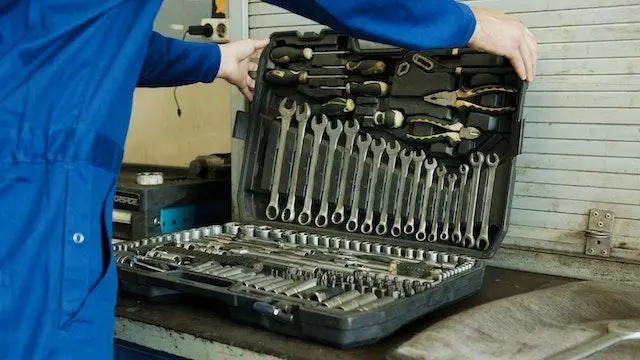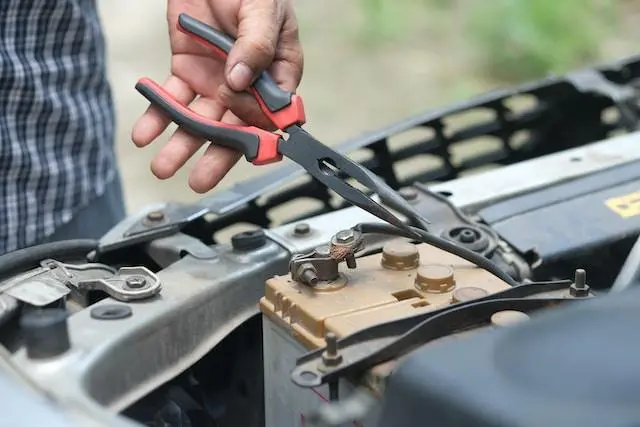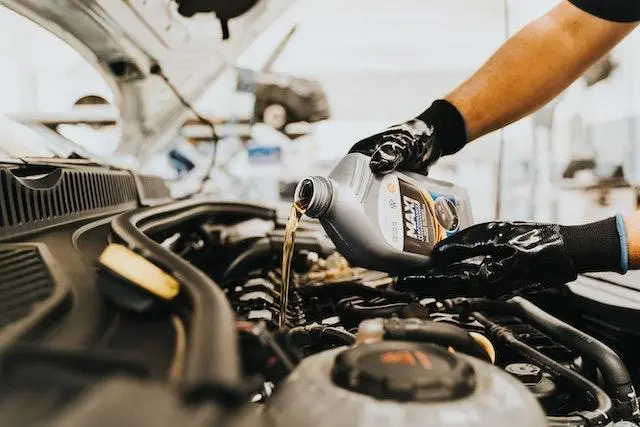What is a Head gasket?
Published Date: 20th Jun 2023
 The cylinder head gasket plays a crucial role in sealing cylinders and maintaining the engine block's integrity within the intricate machinery that powers an automobile. This unassuming yet vital part ensures optimal engine performance, prevents leaks, and safeguards the vehicle's overall health. In this article, we will delve into the intricacies of the car head gasket, exploring its functions, common issues, and the importance of regular maintenance.
The cylinder head gasket plays a crucial role in sealing cylinders and maintaining the engine block's integrity within the intricate machinery that powers an automobile. This unassuming yet vital part ensures optimal engine performance, prevents leaks, and safeguards the vehicle's overall health. In this article, we will delve into the intricacies of the car head gasket, exploring its functions, common issues, and the importance of regular maintenance.
A car head gasket is a thin, flat seal separating the engine block and the cylinder head. Its purpose is to create a secure barrier between the combustion chambers and the engine's coolant passages. Head gaskets are designed to withstand the extreme temperatures and pressures generated within the engine, constructed from robust materials, such as multi-layered steel or composite materials with elastomer coatings.
Find Car Deals Near Me
How Does a Car Head Gasket Work?
A head gasket is a thin, flexible disc between an engine's cylinder head and block. This crucial component is constructed from a range of materials such as steel, copper, and asbestos and serves three main functions:
 The head gasket is a vital component of all engines. It effectively seals the connection between the engine block and cylinder head, thereby preventing the escape of combustion gases from the combustion chambers. Doing so ensures that compression ratios remain optimal, critical for preserving engine performance and efficiency.
The head gasket is a vital component of all engines. It effectively seals the connection between the engine block and cylinder head, thereby preventing the escape of combustion gases from the combustion chambers. Doing so ensures that compression ratios remain optimal, critical for preserving engine performance and efficiency.- To maintain compression. By sealing the combustion chambers, the head gasket helps maintain the required compression ratio, allowing the engine to generate power efficiently. A loss of compression can lead to a loss of power, as well as other problems such as overheating and engine knocking.
- The head gasket not only separates the coolant passages from the combustion chambers but also prevents the mixing of coolant and engine oil. Doing so averts overheating, possible damage to the engine and loss of coolant, which is essential to ensure optimal engine performance and safety.
Different Types of Car Head Gaskets
- Composite Head Gaskets: These are the most widely used head gaskets. They are made from a composite material, such as graphite or asbestos, reinforced with a metal core. Composite gaskets provide good sealing capabilities and are suitable for most standard engines.
- Multi-Layer Steel (MLS) Head Gaskets: MLS gaskets consist of thin steel layers coated with a sealing agent, such as an elastomer. These gaskets are highly durable, capable of withstanding high compression levels and extreme temperatures. MLS gaskets are commonly used in performance engines and engines with turbochargers or superchargers.
- Solid Copper Head Gaskets: Copper gaskets are made entirely from copper, providing excellent heat transfer and sealing properties. They are often used in high-performance engines, where increased thermal conductivity is desired. Copper gaskets require careful installation and are typically reusable when properly maintained.
- Rubber-Coated Steel Head Gaskets: These gaskets feature a steel core with a rubber coating, typically made from elastomers. Rubber-coated steel gaskets offer good flexibility and are commonly used in engines with variations in the cylinder head and block alignment.
- MLS-R (Multi-Layer Steel with Rubber) Head Gaskets: MLS-R gaskets combine the benefits of multi-layer steel and rubber-coated steel gaskets. They feature multiple steel layers with rubber coating, providing excellent sealing capabilities and the ability to compensate for any irregularities in the mating surfaces.
New Car Deals Near Me
Which type of head gasket is better?
Among the different types of head gaskets, Multi-Layer Steel (MLS) gaskets are the best and most reliable option for most applications. MLS gaskets offer several advantages that contribute to their popularity:
 Durability: MLS gaskets are designed to withstand high compression levels and extreme temperatures without compromising their sealing capabilities. They are less prone to failure or blowouts than other gaskets.
Durability: MLS gaskets are designed to withstand high compression levels and extreme temperatures without compromising their sealing capabilities. They are less prone to failure or blowouts than other gaskets.- Sealing Properties: MLS gaskets provide excellent sealing properties, ensuring a tight and reliable seal between the cylinder head and engine block. This helps prevent coolant leaks, oil leaks, and the mixing of coolant and oil, which can lead to engine damage.
- Compatibility with Different Engines: MLS gaskets are versatile and suitable for a wide range of engines, including standard engines, high-performance engines, and engines with forced induction (turbochargers or superchargers).
- Reusability: In many cases, MLS gaskets can be reused if they are in good condition and properly maintained. This can be beneficial for engine rebuilds or repairs, reducing costs associated with gasket replacement.
While MLS gaskets are generally considered the top choice, it's important to note that the reliability of a head gasket also depends on other factors, such as proper installation, adherence to torque specifications, and regular cooling system maintenance. Additionally, specific engine requirements, such as combustion chamber design or material compatibility, may influence the choice of the head gasket. Consulting with a knowledgeable mechanic or referring to the manufacturer's recommendations is always advisable to ensure the best and most reliable head gasket for a particular engine.
What are the usual issues with Head gaskets?
Over time, the head gasket may develop issues from wear and tear, improper maintenance, or engine overheating. Here are some common signs of a faulty head gasket:
 Engine Overheating: A failing head gasket can cause coolant to leak into the combustion chambers, leading to engine overheating and potential damage if left unaddressed.
Engine Overheating: A failing head gasket can cause coolant to leak into the combustion chambers, leading to engine overheating and potential damage if left unaddressed.- White Exhaust Smoke: Coolant mixing with the combustion process can produce white smoke from the exhaust. This is a clear indication of a head gasket problem.
- Loss of Coolant: A noticeable decrease in the coolant level without any visible leaks may indicate a head gasket leak, allowing coolant to escape from the system.
- Engine Misfires or Poor Performance: A compromised head gasket can disrupt the combustion process, resulting in engine misfires, reduced power, or a rough-running engine.
- A blown head gasket is a significant issue that can lead to several problems, such as engine overheating, loss of power, white smoke from the exhaust, coolant in the oil, and oil in the coolant. If you suspect a blown head gasket, getting your car examined by a qualified mechanic as soon as possible is crucial.
Here are some of the signs and symptoms of a blown head gasket:
 Oil in the coolant
Oil in the coolant- Loss of power
- Rough running engine
- Engine misfires
- Coolant leaks
- Engine overheating
- White smoke from the exhaust
- Coolant in the oil.
If you notice any of these signs, having your car checked by a mechanic as soon as possible is important. A blown head gasket will cause serious damage to your engine if it is not repaired.
The cost of fixing a blown head gasket depends on the car's make and model and the extent of the damage. Nevertheless, it is often a costly repair that should be undertaken with professional expertise.
How to Replace Your Car's Head Gasket
Disclaimer: This explanation serves solely for information purposes and should not be used as a substitute for professional advice. Unless you have the requisite experience and knowledge to work on your car's engine, we recommend that you consult a qualified mechanic.
 Tools and Materials Needed:
Tools and Materials Needed:
- New head gasket
- Head gasket sealer
- Torque wrench
- Socket set
- Allen wrenches
- Rags
- Cleaning solvent
- Coolant
- Oil
Gasket Replacement Instructions:
- Drain the coolant and oil. Follow the manufacturer's instructions for draining the coolant and oil from your car's engine.
- Remove the engine head. This will require removing the timing belt, the valve covers, and the head bolts.
- Inspect the head gasket. Look for signs of damage, such as cracks, leaks, or burns. If the head gasket is damaged, it will need to be replaced.
 Clean the engine block and cylinder head. Using a cleaning solvent removes dirt, debris, or old gasket material from the engine block and cylinder head.
Clean the engine block and cylinder head. Using a cleaning solvent removes dirt, debris, or old gasket material from the engine block and cylinder head.- Install the new head gasket. Apply a thin layer of head gasket sealer to the mating surfaces of the engine block and cylinder head. Then, carefully install the new head gasket.
- Reinstall the engine head. Torque the head bolts to the specified setting.
- Refill the coolant and oil. Follow the manufacturer's instructions for refilling the coolant and oil in your car's engine.
- Start the engine and check for leaks. Run the engine for a few minutes and check for leaks around the head gasket. If you find any leaks, you will need to tighten the head bolts or replace the head gasket again.
Tips:
- If you need help removing the engine head, consult a repair manual or take your car to a qualified mechanic.
- It is important to use the correct type of head gasket sealer. The wrong type of sealer can cause problems.
- Be careful not to overtighten the head bolts. Overtightening can damage the head gasket or the engine block.
- Start the engine and check for leaks after you have refilled the coolant and oil. If you find any leaks, you will need to tighten the head bolts or replace the head gasket again.
Warnings:
- Be careful when working with hot coolant and oil.
- Ensure you use gloves and safety glasses while working on your car's engine, providing protection and peace of mind.
- You mustn't run your engine if there is a leak around the head gasket, as this will cause serious damage to your engine.
How to Prolong the Life of Your Car's Headgasket
 Keep your engine cool. Overheating can damage the head gasket, so it is important to keep your engine cool. This means regularly checking the coolant levels and adding coolant as needed. It also means avoiding driving your car in hot weather without proper cooling.
Keep your engine cool. Overheating can damage the head gasket, so it is important to keep your engine cool. This means regularly checking the coolant levels and adding coolant as needed. It also means avoiding driving your car in hot weather without proper cooling.- Change your oil regularly. Regularly changing your car's oil is crucial to reduce engine wear and keep it running at optimum performance. The head gasket is strained when oil passages accumulate old and dirty oil. By regularly replacing your oil, you'll be ensuring that your engine oil flows smoothly and cleanly throughout your engine.
- Use the correct coolant. The wrong type of coolant can damage the head gasket. It is important to use the coolant that your car's manufacturer specifies.
- Avoid running your car low on coolant. Running your car low on coolant can cause the engine to overheat, damaging the head gasket. Check the coolant levels regularly and add as needed.
- Have your car serviced regularly. A regular service will include an inspection of the head gasket. This will help to catch any problems early before they cause serious damage.
Additional tips:
- Use high-quality oil and coolant.
- Change your oil and coolant according to the manufacturer's recommendations.
- Avoid driving your car in extreme temperatures.
- Have your car's cooling system flushed regularly.
- Be on the lookout for signs of a blown head gasket, such as engine overheating, white smoke from the exhaust, or coolant in the oil.
Here are the key takeaways:
- A head gasket is a thin, flexible disc between the engine block and the cylinder head.
- It has three main functions: to seal the combustion chambers, to maintain compression, and to separate the coolant and oil passages.
- A blown head gasket will cause issues, including engine overheating, loss of power, white smoke from the exhaust, coolant in the oil, and oil in the coolant.
- You can do a few things to prolong the life of your car's head gasket, such as keeping your engine cool, changing your oil regularly, using the correct coolant, and avoiding running your car low on coolant.
- Regular servicing of your car should include an inspection of its head gasket. This helps ensure proper functioning, long-term reliability, and safety.
- If you notice any signs of a blown head gasket, such as engine overheating, white smoke from the exhaust, or coolant in the oil, you should have it checked by a qualified mechanic as soon as possible.
By following these tips, you can help to keep your car's head gasket in good condition and protect your engine from overheating and damage.
Find New Car Deals Here
Discover your perfect car with the guidance of our team of expert sales professionals. From start to finish, we'll work with you to find the ideal vehicle to match your needs.
Contact UK Car Discount today and explore our wide selection of premium vehicles.
Call us today at 0161 946 3500 to discuss how we can guide you with your next Next New Car.
READ THE LATEST NEW CAR JARGON ARTICLES HERE
